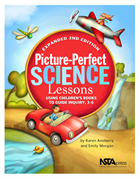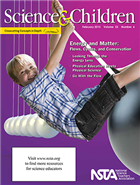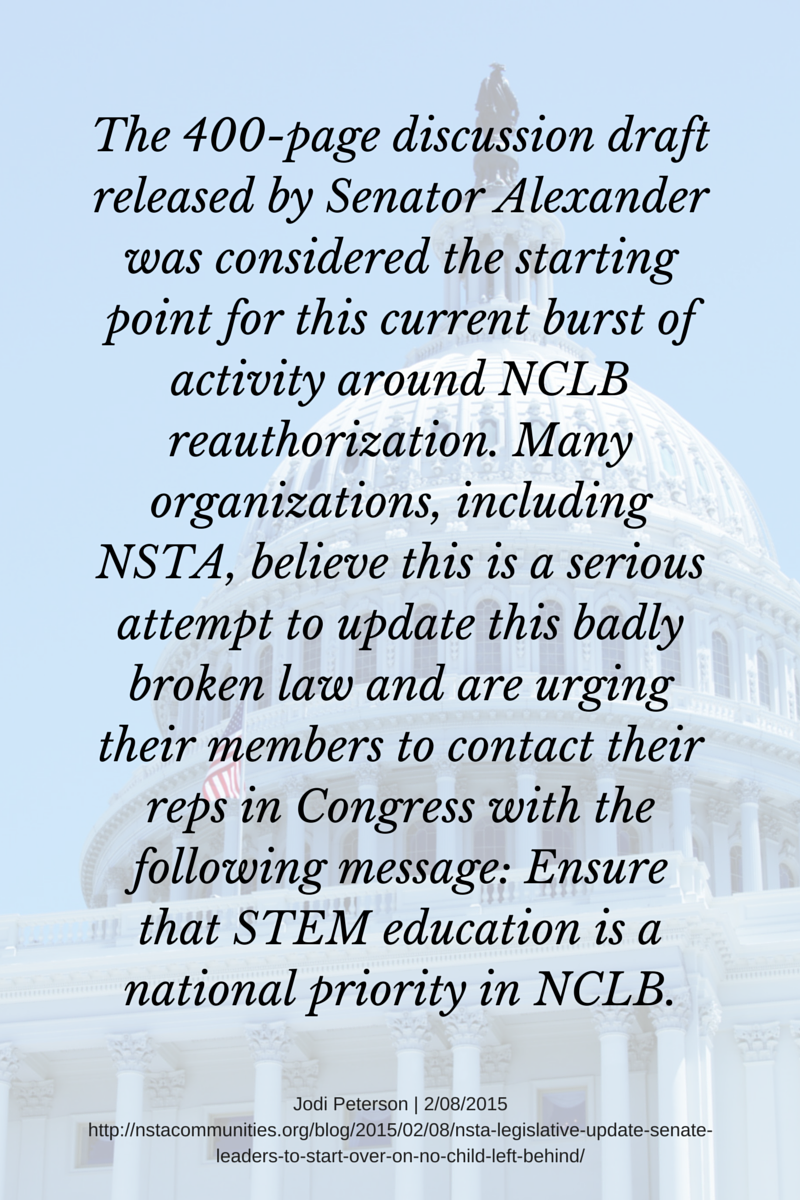Celebrate International Book Giving Day with NSTA, the Home of Science Literacy
By Lauren Jonas, NSTA Assistant Executive Director
Posted on 2015-02-09
 February 14 is not only Valentine’s Day but also International Book Giving Day. Literacy is an important focus for NSTA, and a subject that is personally important to our staff and membership, so we’re celebrating! What’s the day about? Giving books to children and promoting enthusiasm and excitement about books–and as you teach kids to cherish books, it’s important to teach them to care for them properly, so we’re loving the bookmark freebie available for download from the book giving day site!
February 14 is not only Valentine’s Day but also International Book Giving Day. Literacy is an important focus for NSTA, and a subject that is personally important to our staff and membership, so we’re celebrating! What’s the day about? Giving books to children and promoting enthusiasm and excitement about books–and as you teach kids to cherish books, it’s important to teach them to care for them properly, so we’re loving the bookmark freebie available for download from the book giving day site!
As an organization devoted to science teachers, we know that science and reading is a winning combination. For more than 40 years we’ve partnered with the Children’s Book Council to produce an annual list of Outstanding Science Trade Books for Students K-12. This year’s list has everything from Batman Science to Beetle Busters to Sally Ride. There’s something for students at every grade and interest level. If you’re looking for a great book to give or check out from the library, look no further.
If you’re a science teacher and want to incorporate science content into your reading program, we have some great resources that will save you time in the classroom and help you reach students in innovative ways (free registration in the NSTA Learning Center required).
 Why Read Picture Books in Science Class? This free e-book provides information on how to implement Picture-Perfect Science in your classroom—including key reading strategies and the first five chapters of the book Picture-Perfect Science Lessons, Expanded 2nd Edition: Using Children’s Books to Guide Inquiry, 3–6.
Why Read Picture Books in Science Class? This free e-book provides information on how to implement Picture-Perfect Science in your classroom—including key reading strategies and the first five chapters of the book Picture-Perfect Science Lessons, Expanded 2nd Edition: Using Children’s Books to Guide Inquiry, 3–6.- Teaching Science Through Trade Books This archived web seminar features Christine Royce, NSTA Member and Press author of Teaching Science Through Trade Books. In this free program, Dr. Royce shared strategies for using fiction and nonfiction children’s books to teach fundamental science concepts.
 Water Wherever Not sure how to incorporate books into science teaching? Find inspiration in this trade book–focused article from the NSTA journal Science and Children. Whether rain, sleet, or snow, February weather across the country provides students with opportunities to observe the many different ways the water cycle affects our daily lives. This article looks at the water cycle and looks at two trade books: The Snowy Day and The Drop in My Drink. Activities are provided for students in grades K–3 and 4–6.
Water Wherever Not sure how to incorporate books into science teaching? Find inspiration in this trade book–focused article from the NSTA journal Science and Children. Whether rain, sleet, or snow, February weather across the country provides students with opportunities to observe the many different ways the water cycle affects our daily lives. This article looks at the water cycle and looks at two trade books: The Snowy Day and The Drop in My Drink. Activities are provided for students in grades K–3 and 4–6.
Looking for more teaching resources that pair reading and science? Join a vibrant community of fellow learners who depend on the NSTA Learning Center. There, you can create your personalized learning journey based on your own unique learning needs and preferences. You can plan, track, and assess your progress over time. It’s free to register and connects you with a vast array of opportunities.
 Looking for new books to add to your library? Now through Monday, February 23, 2015, we’re offering 10% off all our NSTA Kids books (includes all NSTA Kids e-books, mixed-media sets, and sets). Use promo code GIVEBK at check out when you purchase these kid magnets in the NSTA Science Store.
Looking for new books to add to your library? Now through Monday, February 23, 2015, we’re offering 10% off all our NSTA Kids books (includes all NSTA Kids e-books, mixed-media sets, and sets). Use promo code GIVEBK at check out when you purchase these kid magnets in the NSTA Science Store.
So put February 14 on your calendar and join us as we celebrate International Book Giving Day. Here at NSTA we’ll be donating books to local schools via a staff book giveaway. Follow us on Twitter @NSTA to see pictures, and we hope you’ll share with us the creative ways you find to nurture the love of reading in your budding scientists! And don’t forget to teach them to respect books–if you’re looking for a lovely way to encourage your students to spread their literary wings, we offer this downloadable NSTA book mark to help them mark their progress. If you have a two-sided printer, you won’t want to miss the gorgeous art on the back.
Follow NSTA
 February 14 is not only Valentine’s Day but also International Book Giving Day. Literacy is an important focus for NSTA, and a subject that is personally important to our staff and membership, so we’re celebrating! What’s the day about?
February 14 is not only Valentine’s Day but also International Book Giving Day. Literacy is an important focus for NSTA, and a subject that is personally important to our staff and membership, so we’re celebrating! What’s the day about?
Heat and energy: what can young children understand?
By Peggy Ashbrook
Posted on 2015-02-09
 My cat has moved to the top of the radiator for the winter, at least when the boiler is on and warm air is moving up through convection from below. With a house temperature of 66*-68*F, I would also like to lie on it, hopefully with some sunshine radiating light and warmth through the window. “Radiating,” is that a word that children can understand? What vocabulary should we use to talk about the movement of “warmth” from one place to another? For preschool children we can begin with “”heat,” “hot,” “cold,” “warm,” “cool,” and “moving,” adding “transfer” as we have occasion to use it while talking with children about their experiences. For teacher background information about heat, read “Cool Facts About Heat” by Stephanie Chasteen on the Ohio State University online magazine for elementary teachers, Beyond Penguins and Polar Bears.
My cat has moved to the top of the radiator for the winter, at least when the boiler is on and warm air is moving up through convection from below. With a house temperature of 66*-68*F, I would also like to lie on it, hopefully with some sunshine radiating light and warmth through the window. “Radiating,” is that a word that children can understand? What vocabulary should we use to talk about the movement of “warmth” from one place to another? For preschool children we can begin with “”heat,” “hot,” “cold,” “warm,” “cool,” and “moving,” adding “transfer” as we have occasion to use it while talking with children about their experiences. For teacher background information about heat, read “Cool Facts About Heat” by Stephanie Chasteen on the Ohio State University online magazine for elementary teachers, Beyond Penguins and Polar Bears.
As a preschool teacher I am not confined to teaching concepts and vocabulary during a “unit” but can engage children in discussions and re-visit activities throughout the year. In summer, we might feel heat radiating from a metal sliding board or the blacktop. The metal and blacktop were warmed as they absorbed the radiation from the sun. Year round, we can experience the changing temperature of a cup of hot (warm) chocolate, a baked potato or a hard-boiled egg cooling down in our hands as the heat transfers to our hands and the surrounding air.
Another way of exploring the transfer of heat is to melt an ice cube in our hands. In the January 2006 Science and Children’s Early Years column I wrote, that “…keeping a child’s attention while a solid melts completely can be a challenge. That is why when exploring melting, it’s worth it to repeat the experience a few times with various substances, including chocolate and wax.” If melting ice doesn’t arouse a child’s curiosity, maybe melting chocolate will! Early childhood teacher and author Marie Faust Evitt engages her students in an activity involving heat transfer called “What is Your Cold Count?” where children make predictions. See photos on the Facebook page for her book, Thinking BIG Learning BIG.
In addition to providing experiences where children can observe the transfer of heat from one material to another, engage them in conversations and discussion about what they noticed and what they think about it. Heat is energy that is moving, going from one place to another. There is no rush for children to understand the concept of energy–it is enough to talk about the movement of heat. The Next Generation Science Standards Kindergarten performance expectation about energy, K-PS3-1, is, “Make observations to determine the effect of sunlight on Earth’s surface,” something children can do as they feel rocks or sand in sunlight and in shade.
 The February 2015 issue of Science and Children focuses on the Crosscutting Concept, Heat and Energy. The Teaching Through Trade Books column, “Understanding Matter and Energy” by Christine Anne Royce, and the Science 101 column, “How Should We Label Different Kinds of Energy?” by Bill Robertson are two resources that can help us understand the concept of energy, a fourth grade performance expectation in the Next Generation Science Standards. Read the Disciplinary Core Ideas in the box below the performance expectations to learn more about energy. Appendix E of the NGSS, “Progressions Within the Next Generation Science Standards” has progressions in student thinking about energy. A Framework for K-12 Science Education, a free download, the foundation for the NGSS, has an extensive section on energy, pages 120-130.
The February 2015 issue of Science and Children focuses on the Crosscutting Concept, Heat and Energy. The Teaching Through Trade Books column, “Understanding Matter and Energy” by Christine Anne Royce, and the Science 101 column, “How Should We Label Different Kinds of Energy?” by Bill Robertson are two resources that can help us understand the concept of energy, a fourth grade performance expectation in the Next Generation Science Standards. Read the Disciplinary Core Ideas in the box below the performance expectations to learn more about energy. Appendix E of the NGSS, “Progressions Within the Next Generation Science Standards” has progressions in student thinking about energy. A Framework for K-12 Science Education, a free download, the foundation for the NGSS, has an extensive section on energy, pages 120-130.
 Misconceptions may be held by children, and they may also be confused by words have different meanings or usages in every day and in scientific contexts. Jessica Fries-Gaither wrote about “Common Misconceptions about Heat and Insulation” on Beyond Penguins and Polar Bears. Fries-Gaither notes that, “many of these misconceptions are persistent and even developmentally appropriate. With the proper experiences and informal exploration in elementary school, students will be prepared to tackle these misconceptions in later years.”
Misconceptions may be held by children, and they may also be confused by words have different meanings or usages in every day and in scientific contexts. Jessica Fries-Gaither wrote about “Common Misconceptions about Heat and Insulation” on Beyond Penguins and Polar Bears. Fries-Gaither notes that, “many of these misconceptions are persistent and even developmentally appropriate. With the proper experiences and informal exploration in elementary school, students will be prepared to tackle these misconceptions in later years.”
In writing about this topic I turned to the NSTA online community for guidance. I wanted to check my understanding and find out what others thought young children can understand. Both the email listserv for NSTA members and the open-to-all forums in the NSTA Learning Center are terrific tools for connecting and learning from colleagues. Thank you all!
Legislative Update
Senate Leaders to Start Over on No Child Left Behind
By Jodi Peterson
Posted on 2015-02-08
 Last week the Washington Post reported that Senator Lamar Alexander (R-TN) and Senator Patty Murray (D-WA), chair and ranking member of the Senate Health, Education, Labor & Pensions (HELP) Committee respectively, will work together to draft a bipartisan bill to reauthorize No Child Left Behind (NCLB), instead of working from a discussion draft bill introduced by Committee Chairman Lamar Alexander a few weeks ago and “they are determined to find common ground and draft a new law that will get bipartisan support.”
Last week the Washington Post reported that Senator Lamar Alexander (R-TN) and Senator Patty Murray (D-WA), chair and ranking member of the Senate Health, Education, Labor & Pensions (HELP) Committee respectively, will work together to draft a bipartisan bill to reauthorize No Child Left Behind (NCLB), instead of working from a discussion draft bill introduced by Committee Chairman Lamar Alexander a few weeks ago and “they are determined to find common ground and draft a new law that will get bipartisan support.”
As noted in a Jan. 19 blog post, the 400-page discussion draft released by Senator Alexander was considered the starting point for this current burst of activity around NCLB reauthorization. Many organizations, including NSTA, believe this is a serious attempt to update this badly broken law and are urging their members to contact their reps in Congress with the following message: Ensure that STEM education is a national priority in NCLB. Please use the STEM Education Coalition website and contact your members of Congress with this message.
With these new developments, it is highly unlikely that the Senate HELP committee will push out any NCLB legislation by the end of February.
Also last week, Republican education leaders in the House introduced their bill to replace No Child Left Behind. The Student Success Act (H.R. 5) will reduce the federal footprint and restore local control, while empowering parents and education leaders to hold schools accountable for effectively teaching students.
In other legislative news, the President’s budget released last week had some good news for science and STEM education:
- $3 billion for STEM education programs in total across 13 federal agencies, an increase of 3.6 percent over the 2015 enacted level
- $202.7 million for the existing Math and Science Partnership program, a $50 million increase over FY15. The budget also proposes reserving $25 million of this funding for competitive grants to support state and regional STEM networks and a reservation of 5% for “national” activities
- $125 million for a new program called Next Generation High Schools, which would promote the whole school transformation of high school education. The Department would place a strong focus on projects designed to improve readiness for college and careers in STEM fields, particularly for student groups historically underrepresented in those fields.
At the National Science Foundation,funding for the NSF’s Education and Human Resources Directorate is proposed at $962.57 million, an increase of $96 million of 11.2% over FY 2015. Funding for the STEM+Computer Science Partnerships Program is proposed for $64 million, an increase of $7 million. [This includes $52 million from EHR and $12.5 million from the Computing Research Directorate (CISE).]
Stay tuned and look for upcoming issues of NSTA Express for the latest information on developments in Washington, DC.
Jodi Peterson is Assistant Executive Director of Legislative Affairs for the National Science Teachers Association (NSTA) and Chair of the STEM Education Coalition. e-mail Jodi at jpeterson@nsta.org; follower her on Twitter at @stemedadvocate.
The mission of NSTA is to promote excellence and innovation in science teaching and learning for all.
Follow NSTA
 Last week the Washington Pos
Last week the Washington Pos

